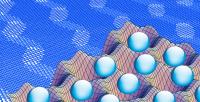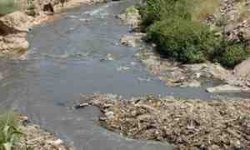Science
Proba-2 soaks up three solar eclipses

The total solar eclipse of 13/14 November 2012. The clouds cleared in time for observers at Palm Cove, Australia, to experience totality as the Moon totally obscured the Sun for around two minutes, revealing the Sun's bright corona.
- Read more
- 364 reads
Scientists Produce Efficient Nanocatalysts for Methane Partial Oxidation

- Read more
- 344 reads
Smart scaffolding aims to rebuild tissue from the inside: NIH funds tissue engineering project at Rice University to test peptide hydrogels, starting with teeth

At top, a graphic shows multidomain peptide self-assembling into a nanofiber. The scanning electron microscope image at bottom left shows formed nanofibers; at bottom right, a histological section of cells (blue dots) grows in a dentincylinder, where they mimic the desired dental-pulp regeneration.
- Read more
- 369 reads
NASA Study Examines Antarctic Sea Ice Increases

View of Sheldon Glacier with Mount Barre in the background, seen from Ryder Bay near Rothera Research Station, Adelaide Island, Antarctica. A new NASA/British Antarctic Survey study examines why Antarctic sea ice cover has increased under the effects of climate change over the past two decades.
- Read more
- 367 reads
Storms, Ozone, Vegetation and More: NASA-NOAA Suomi NPP Satellite Returns First Year of Data

These two images are season-long composites of ocean chlorophyll concentrations derived from visible radiometric measurements made by the VIIRS instrument on Suomi NPP. The date ranges of the two composites are included in the individual images. These false-colored images make the data stand out. The purple and blue colors represent lower chlorophyll concentrations. The oranges and reds represent higher chlorophyll concentrations. These differences in color indicate areas with lesser or greater phytoplankton biomass.
- Read more
- 358 reads
Odd pair of aging stars sculpt spectacular shape of planetary nebula

- Read more
- 438 reads
What if the nanoworld slides: A new study to better understand how friction works

What if the nanoworld slides?
- Read more
- 402 reads
Iranian Scientists Remove 90% of Arsenic from Polluted Waters

- Read more
- 374 reads
Human Rights
Fostering a More Humane World: The 28th Eurasian Economic Summi

Conscience, Hope, and Action: Keys to Global Peace and Sustainability

Ringing FOWPAL’s Peace Bell for the World:Nobel Peace Prize Laureates’ Visions and Actions

Protecting the World’s Cultural Diversity for a Sustainable Future

Puppet Show I International Friendship Day 2020



